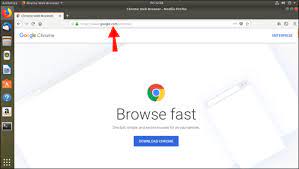Unleashing the Potential of RPMs in the Linux Environment
The Power of RPMs in Linux
RPMS, or Red Hat Package Manager files, are a crucial component of the Linux ecosystem. These packages contain software applications, libraries, and other resources needed to run specific programs on a Linux system. RPMs streamline the process of installing, updating, and managing software on a Linux distribution that utilises the RPM Package Manager.
One of the key advantages of using RPMs is their ease of installation. With just a few simple commands, users can install new software packages without having to worry about complex dependencies or configurations. This simplicity makes RPMs an attractive option for both beginners and experienced users alike.
Furthermore, RPMs facilitate efficient software management. Users can easily update existing packages to newer versions or remove unwanted software with minimal effort. The package management system ensures that dependencies are handled automatically, reducing the risk of conflicts and errors during the installation process.
Another benefit of RPMs is their reliability and security. Packages distributed in RPM format undergo rigorous testing to ensure compatibility and stability. Additionally, cryptographic signatures are used to verify the authenticity and integrity of packages, safeguarding users against malicious tampering or malware.
For developers and system administrators, creating custom RPM packages offers a convenient way to distribute software across multiple systems. By packaging applications into RPM format, developers can simplify deployment processes and ensure consistency across different environments.
In conclusion, RPMS play a vital role in the Linux ecosystem by providing a convenient and secure method for managing software installations. Whether you are a casual user looking to install new applications or a developer seeking to streamline deployment workflows, understanding the power of RPMS can enhance your experience with Linux.
7 Essential Tips for Managing Your Vehicle’s RPMs Effectively
- Check your vehicle’s manual for the recommended RPM range
- Avoid consistently revving the engine too high to prevent damage
- Shift gears smoothly to maintain a steady RPM
- Monitor RPMs while driving to ensure optimal fuel efficiency
- Use cruise control on highways to help regulate RPMs
- Regularly inspect and maintain your vehicle’s engine components for proper RPM function
- Consider installing a tachometer for accurate RPM monitoring
Check your vehicle’s manual for the recommended RPM range
When it comes to maintaining your vehicle’s performance and efficiency, it is essential to check your vehicle’s manual for the recommended RPM range. Operating your vehicle within the specified RPM range not only ensures optimal engine performance but also contributes to fuel efficiency and longevity. By adhering to the manufacturer’s guidelines on RPM usage, you can help prevent unnecessary strain on your engine and transmission, ultimately prolonging the life of your vehicle and maximising its overall performance.
Avoid consistently revving the engine too high to prevent damage
To maintain the longevity and health of your engine, it is advisable to avoid consistently revving it too high. Excessive revving can put unnecessary strain on the engine components, leading to potential damage over time. By practising responsible driving habits and keeping engine revs within recommended limits, you can help preserve the performance and durability of your vehicle’s engine in the long run.
Shift gears smoothly to maintain a steady RPM
When driving, it is essential to shift gears smoothly to maintain a steady RPM (Revolutions Per Minute) in order to ensure optimal performance and fuel efficiency. By transitioning between gears seamlessly, drivers can prevent unnecessary strain on the engine and transmission, promoting a smoother driving experience. Consistently maintaining a steady RPM also helps improve overall vehicle control and responsiveness on the road.
Monitor RPMs while driving to ensure optimal fuel efficiency
Monitoring RPMs while driving is a valuable tip to enhance fuel efficiency in vehicles. By keeping an eye on the revolutions per minute (RPM) gauge, drivers can adjust their driving habits to maintain an optimal RPM range for fuel economy. Maintaining a steady RPM during acceleration and cruising can help reduce fuel consumption and improve overall efficiency. This simple yet effective practice can lead to cost savings on fuel expenses and contribute to a more environmentally friendly driving experience.
Use cruise control on highways to help regulate RPMs
Using cruise control on highways is a smart tip to help regulate RPMs while driving. By maintaining a steady speed, cruise control can prevent unnecessary fluctuations in engine revs, promoting fuel efficiency and prolonging the life of your vehicle. This feature is particularly useful on long journeys, where consistent RPM levels can contribute to a smoother and more enjoyable driving experience. So next time you hit the open road, consider engaging cruise control to keep your RPMs in check and optimise your driving performance.
Regularly inspect and maintain your vehicle’s engine components for proper RPM function
Regularly inspecting and maintaining your vehicle’s engine components for proper RPM function is essential for ensuring optimal performance and longevity of your vehicle. The RPM, or revolutions per minute, indicates the speed at which the engine’s crankshaft rotates. By monitoring and maintaining the RPM levels within the recommended range, you can prevent potential issues such as engine overheating, misfires, or excessive wear on components. Regular inspections of engine components such as spark plugs, fuel filters, and air intake systems can help identify any issues affecting RPM function early on, allowing for timely repairs and adjustments to keep your vehicle running smoothly.
Consider installing a tachometer for accurate RPM monitoring
When working with RPMs on a Linux system, one valuable tip to enhance performance and monitoring accuracy is to consider installing a tachometer. A tachometer provides real-time feedback on the rotational speed of the system’s components, allowing users to monitor RPM levels with precision. By incorporating a tachometer into your setup, you can ensure optimal performance, troubleshoot potential issues promptly, and maintain the efficiency of your system effectively.







